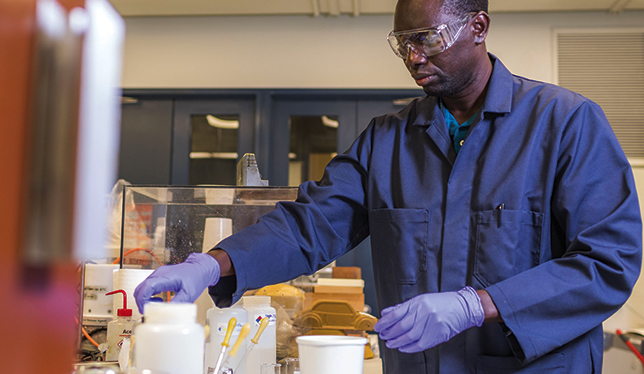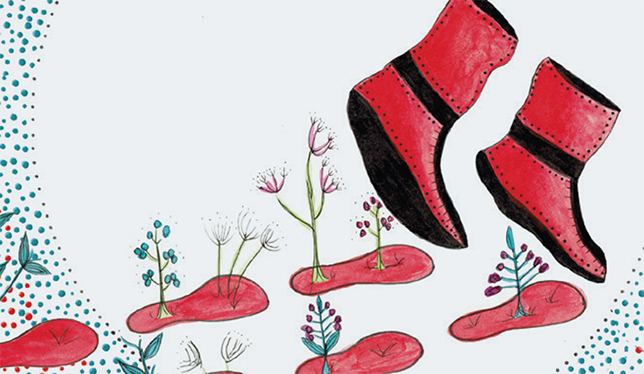National Research Council lays out a four-year reform plan
This latest overhaul of the NRC aims to boost engagement, restore lost morale.

The National Research Council of Canada will set up a postdoctoral program, appoint a chief scientific adviser and establish a president’s research excellence committee as part of the lat-est round of reforms at the agency. The four-year reform plan, the result of a year-long “dialogue” with NRC staff initiated in August 2016 by the agency’s new president, Iain Stewart, includes spending $20 million over three years on new information technology. The plan was posted on the agency’s website this past fall.
Some of the reforms appear to be aimed at restoring scientific excellence to prominence at the agency, which seemed to get sidelined in favour of more business-focused work after the NRC’s last round of reforms under Stephen Harper’s Conservative government. The agency’s portfolio structure, which replaced the old institutes and cut spending on fundamental research, will now itself be replaced with “research centres,” each with their own external advisory board. The engineering division is now split into transportation, and manufacturing and engineering. The information and communication technologies portfolio, under the emerging technologies division, is now split into the Digital Technologies Research Centre and the Advanced Electronics and Photonics Research Centre.
Paul Dufour, an adjunct professor at the University of Ottawa’s Institute for Science, Society and Policy, said the changes do not indicate that the agency is backtracking on the Harper government’s reforms. “I think it’s a forward look, to recapture the essence of the organization: research excellence and service to industry,” he said.
The overall focus on fewer, large-scale multidisciplinary outcome-oriented research and development programs will remain. They will concentrate on supporting federal government priorities in the six areas identified in the Innovation and Skills Plan unveiled in the 2017 budget: advanced manufacturing, agri-food, clean technology, digital industries, health and bio-sciences, and clean resources. The NRC will also look for ways to support the government’s soon-to-be-announced superclusters. The agency will also create programs to support exploratory work on “disruptive science and technology areas.”
Yves Gingras, a historian at Université du Québec à Montréal who studies science and technology policy, applauds the focus on mission-oriented research in the six well-defined areas, but he is less keen on the talk of disruptive technologies. “It’s a management guru word,” he said. “Who can say in advance if a given technology will be disruptive?”
Instead it would be better if the exploratory work was also focused on the six target areas, to give it a more longterm goal. “It shouldn’t change every four years,” he said.
Many of the reforms focus on human resources issues such as career progression and professional development – a sign that the agency is trying to stabilize the morale of its workforce, says Dr. Dufour. “Morale at NRC has been in some decline, so the new president is addressing that,” he said. “It’s important for the agency to attract new people.”
He said the postdoctoral program is one of the better ideas in the plan and will help with that goal. “They need to rejuvenate their research workforce, and this is a good way to do it.” That program is not new, however. The NRC previously had a postdoctoral research program, but it was discontinued in 2007.
The plan also calls for better engagement with universities, colleges, polytechnics and other members of the “regional innovation ecosystem” to encourage more research collaborations and exchanges.
“The National Research Council needs to focus on what it brings – the uniquely, valuable activity it does – and it needs to look at who does other things that are valuable and different. And then we need to work out how we work together,” Mr. Stewart said in an interview with the publication Research Money in July (Mr. Stewart declined to be interviewed for this article). “How do we connect with universities, colleges, polytechnics to support business innovation, advancement of knowledge [and] government policy-making? Because there’s so much capacity now.”
Dr. Gingras, however, said the agency is already well-networked with other research institutions. In 2001, just one-third of scientific publications by NRC scientists had academic co-authors, a proportion that has risen to two-thirds now.
Where the NRC could expand collaboration is in its facilities across the country, said Dr. Dufour. “They operate fantastic facilities in local communities, often near or in universities,” he said. “They could strengthen that by being more responsive to local needs.” The reform program does include a plan to conduct a three-year peer review of the NRC’s facilities and develop a plan for their renewal.
Dr. Dufour said much of the reform plan, such as appointing a chief scientific adviser, seems to be a reflection of the mood of the current government, which frequently talks up the importance of scientific excellence. The agency, he said, is signalling that scientific excellence is once again one of its main goals. “The real intent is to get the organization back on track, and get its branding back,” he said.
Featured Jobs
- Dean, Faculty of Health StudiesBrandon University
- Director – Faculty Bargaining ServicesCanadian Association of University Business Officers (CAUBO)
- Education - (2) Assistant Professors (English Language Arts and TESL / Curriculum, Teaching, and Learning) (10-month term)Bishop's University
- Emergency Medical Services - Dr. Ron Stewart EMS Clinician Scientist Dalhousie University
- Creative and Cultural Industries - Assistant Professor (Fashion Studies and Cultures)Chapman University















Post a comment
University Affairs moderates all comments according to the following guidelines. If approved, comments generally appear within one business day. We may republish particularly insightful remarks in our print edition or elsewhere.
1 Comments
I got my start in research at the NRC Labs on Sussex Street in Ottawa in the early 1970s when I was an undergraduate student at Carleton. Working with Dr. Mak Yaguchi, I did research on ribosomes, the complex cellular machinery that makes all the proteins in cells. It was basic research trying to figure out how ribosomes did their job and we published the results in a peer-reviewed journal. The over-arching goal of the research was applied. How do bacteria that live in hot springs or in very salty water adapt their cellular machinery, like ribosomes, to their harsh environment. NRC did this research because industry was interested in using bacteria or bacterial products under similar harsh conditions. We found that only small modifications to the genes of bacteria could render their proteins heat-resistant. Thermo-stable enzymes are now widely used in food processing and the pulp and paper industries. So, basic research decades ago can lead to applications today.